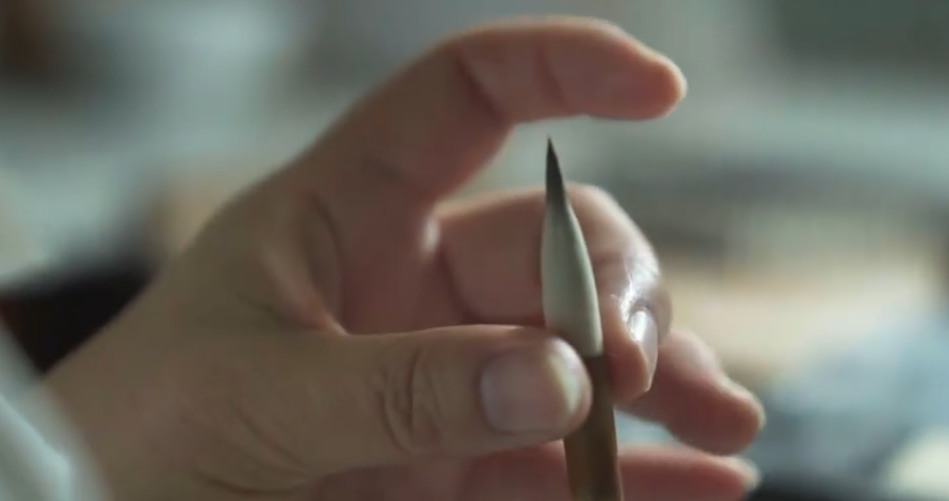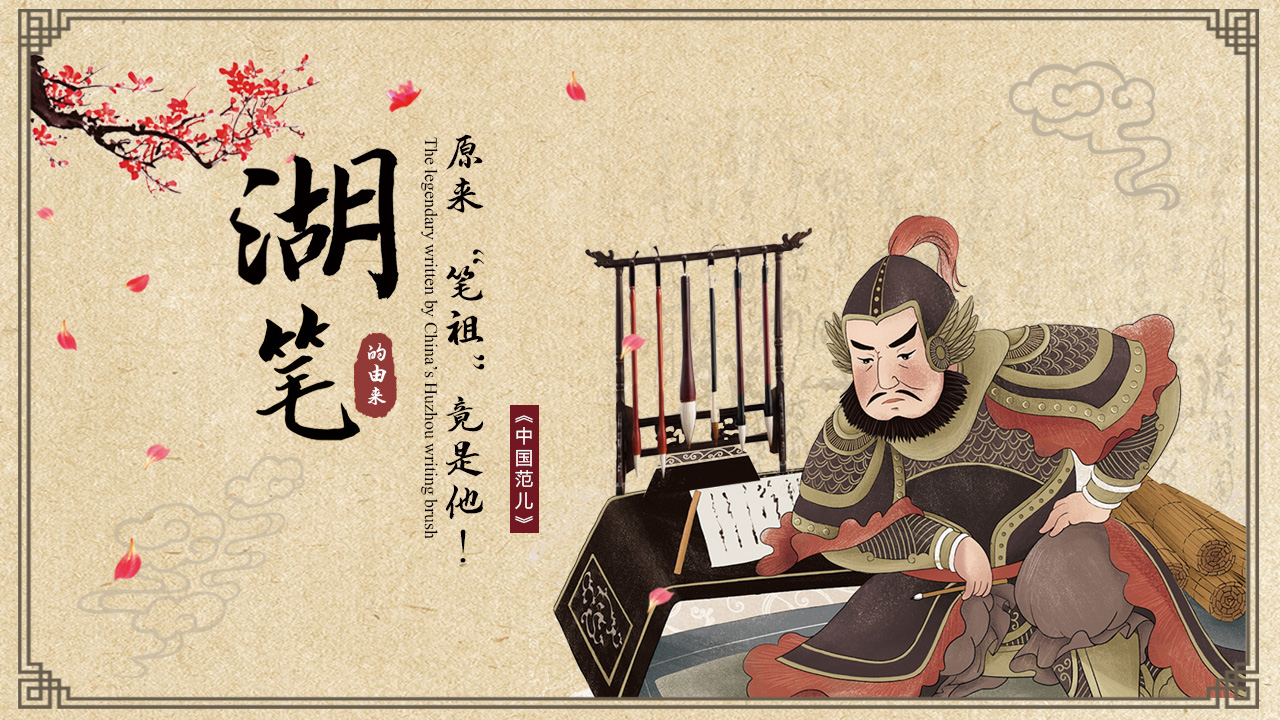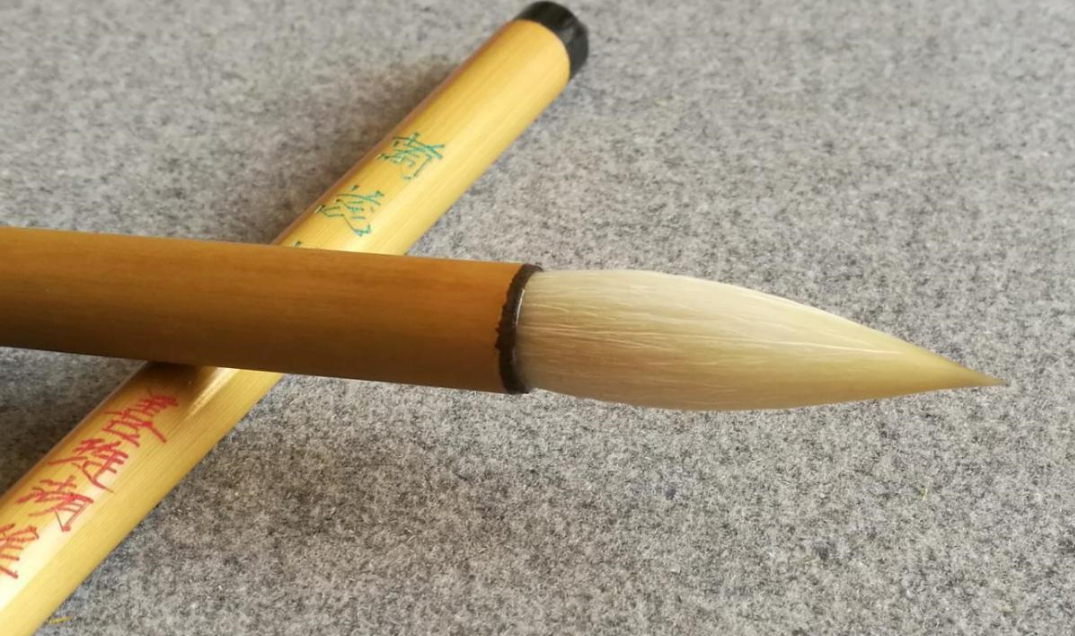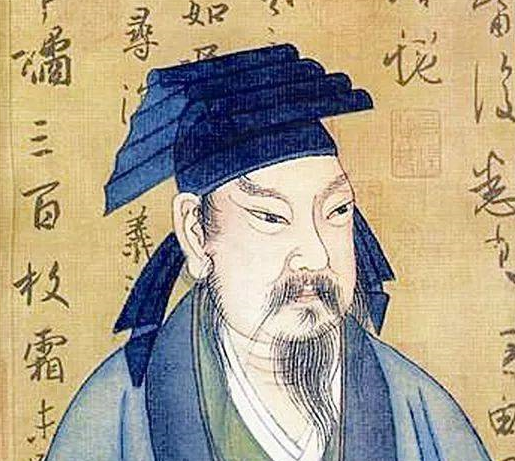湖筆的由來:原來“筆祖”竟是他!
影視劇中,我們常見到古代歐洲人用羽毛筆來書寫,動作瀟灑飄逸。而同樣是用動物的毛髮來製作書寫工具,中國的毛筆則有著全然不同的風采——它選擇了動物毛軟而韌的部分,可以寫出千變萬化的字體,記錄了中國不同時代的事、不同性格的人。
In movies and TV plays, ancient Europeans were seen writing elegantly with a quill pen. While animal hair is also used to make writing tools, Chinese writing brushes have a completely different style. By choosing the soft yet resilient parts of animal hair, Chinese writing brushes are capable of writing a variety of fonts. Such brushes have recorded events in different times and people with different personalities in China.

我們都以為商朝的文字只有甲骨文,事實上考古文物證明,當時的中國人就已經在使用毛筆寫字了,只是因為不如刻在堅硬骨頭上的甲骨文好保存,才遺憾未能讓今世的我們見到。
The Shang Dynasty (1600 BC to 1046 BC), the earliest ruling dynasty of China, are known for its inscriptions on bones or tortoise shells. But archaeological relics proved that Chinese people were already writing with brushes during that period. It is only because they are not as good to preserve as inscriptions on hard bones that we cannot see them today.

而如今我們常見的這種毛筆,相傳是由秦朝負責監督修長城的將軍蒙恬改良而成——真正的文武雙全!蒙恬“用枯木為管,鹿毛為柱,羊毛為被”。後來,他曾居住在今天的浙江省湖州市善璉鎮,在那裏他繼續改良毛筆,採用兔、羊細長而尖的毛,製成後來舉世聞名的“湖筆”。
This kind of writing brush, which is common to us, is said to have been upgraded by Meng Tian, the general in charge of supervising the construction of the Great Wall in Qin Dynasty (221 BC to 207 BC). Meng was indeed a cultured military talent.
Meng was said to use dead wood as the pen holder, deer hair as the central wool column, and wool as the surface layer. He later lived in what is today’s Shanlian Town, Huzhou City, east China’s Zhejiang Province, where he continued to upgrade the writing brush, using the slender and sharp wool of rabbits and sheep to make the Huzhou writing brush as is widely known today.

將軍把技術傳給了湖州百姓,現在這裡幾乎家家會制筆。人們把蒙恬奉為“筆祖”,感謝他為當地百姓帶來的謀生技藝,更感謝他為中華民族文化的傳續做出的貢獻。
The general passed on the craft to the locals of Huzhou, where almost every family can make brushes. They regard Meng Tian as the inventor of Huzhou writing brush to show their gratitude to him for teaching them the bread-winning craft and his contribution to Chinese culture’s continuation.

湖筆的特色是“尖、齊、圓、健”,這同時也是中國最好毛筆的標準——筆毫聚攏時,末端要尖銳;筆尖壓平後,筆毛要齊,沒有參差長短;筆頭要渾圓飽滿;筆毛要有彈性,重壓後提起,即刻恢復原狀。
Huzhou writing brush is sharp, neat, well-stacked and resilient, representing the top quality of Chinese brushes. When the brush hairs gather together, the end should be sharp. After the nib is pressed flat, the hairs should be neat without uneven length. The pen should be well-stacked while the pen hairs should be elastic and can be immediately restored to its original state after being pressed.
“千萬毛中揀一毫”,湖筆取材主要是羊毫、紫毫(野兔背上的紫黑色毛)、狼毫(黃鼠狼尾巴上的毛)和兼毫(取軟硬兩種毛拼在一起而成),長短、粗細、色澤,各有不同。湖筆製作要經過128道大小工序,包含揀、浸、梳、落、撥、挑、抖、絞、連、裝、擇、刻等。除刻字外,沒有一道工序可以由機器來代替,只能純手工完成。
A qualified hair is hard to find. Huzhou writing brush is mainly made of sheep hair, purple-black hair on the hare’s back, black hair on the weasel’s tail and hard and soft hair combined together. The hairs have different lengths, thickness and colors. To make a qualified Huzhou writing brush, it has to go through 128 steps, such as selection, dipping, combing, screening, shaping, bundling, matching and loading of pen tip and pen holder, polishing and engraving. No steps except for engraving can be replaced by machines.
正是如此精細的技藝,才造就了毛筆能輕柔能剛勁、能書能畫、能行草能小楷、能工筆能寫意、能勾勒線條也能暈染揮灑,讓中國書畫成為了一門藝術。
It is such fine skills that make the writing brush gentle and vigorous and capable of both writing and drawing. With the Huzhou wring brush, one can write and paint in different styles and manners, making Chinese painting and calligraphy an art.

湖筆也讓文人墨客癡迷,王羲之不愛金銀琉璃象牙的“奢華”筆桿,獨愛湖州盛産的輕巧的竹子為桿,人稱天下第一行書的《蘭亭序》就是用湖筆書寫而成。
Huzhou wring brush also fascinate literati. Wang Xizhi, the most celebrated of Chinese calligraphers in the ancient times, did not fall for the luxurious penholder made by gold, silver, glass and ivory, but preferred the light one made by bamboo abundant in Huzhou. With the Huzhou writing brush, Wang created the “Preface to the Poems Composed at the Orchid Pavilion”. Written in semi-cursive script, it is the most well-known and most-copied piece of Chinese calligraphy.
2006年,湖筆入選國家非物質文化遺産名錄。在圓珠筆普及的現代、在鍵盤化的今天,毛筆的剛柔並濟依然無法替代,它仍在書寫著中國文化的品格與力量。
In 2006, the Huzhou writing brush was added to China’s list of intangible cultural heritage. Despite the popularity of ballpoint pens and keyboards, writing brushes are still irreplaceable with its combination of rigidity and softness, which are still writing the personality and strength of Chinese culture.
